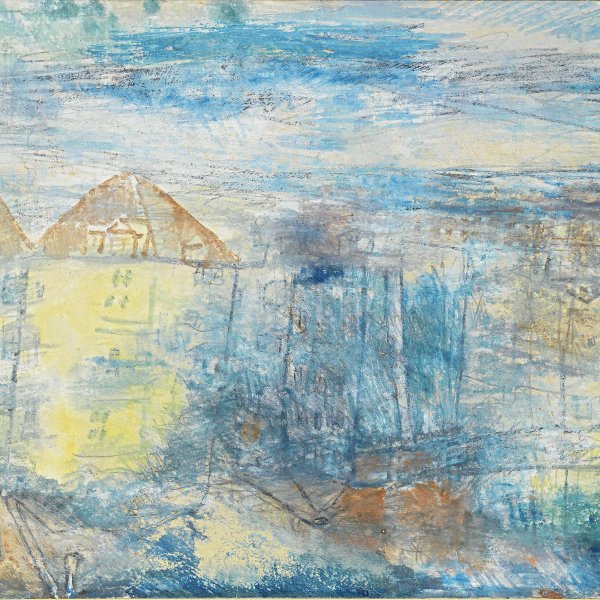Localization of Graphic Mobiles I
Despite sharing Kandinsky’s view that painting, like music, could be expressed exclusively through formal values without needing to imitate or copy any external reality, Kupka experimented with abstract painting in a very personal way. His Central European upbringing left a permanent mark on his sensibility and distanced him from French positivist thought. He also remained aloof from Cubism, the avant-garde aesthetic in Paris at the time, and only occasionally mixed with a few artists belonging to the Cubist circle, such as the brothers Jacques Villon and Raymond Duchamp-Villon, neighbours of his in Puteaux, and played an active role in their discussions on simultaneity in art and the representation of movement. He also took part frequently in the Salon d’Automne and the Salon des Indépendants.
The two versions of Localisation des mobiles graphiques (Localization of Graphic Mobiles), in which Kupka succeeded in translating his inner visions into forms and colours according to a dynamism derived from musical patterns, were shown at the Salon d’Automne of 1913. These two large canvases, on which the artist worked during the winter of 1912–13, may be considered the culmination of his development of an artistic language based on rhythm and harmony and are the finest examples of Kupka’s abstract method. The objective world is transformed into a visual weave that informs the work, and forms are generated in space through a geometrical structure dominated by a centripetal dynamic force. This astral dynamism may stem from the painter’s interest in spiritualism, and, as Simón Marchán points out, these “allusions to the infinite and to the movement of the planetary chain evoke a recurring metaphor of esoteric Buddhism.”
In the Museo Thyssen-Bornemisza painting, Localization of Graphic Mobiles I, the dynamic arrangement of the composition is balanced by a vertical axis which, as Meda Mladek states, may contain reminiscences of earlier Naturalist works, such as the Symbolist illustrations Kupka made for Elisée Reclus’s L’Homme et la terre. In Localization of Graphic Mobiles II all the elements of the composition also converge into a single focal point, into a sort of window onto the infinite. This empty space became progressively larger in his subsequent works, leading eventually to the white, almost bare compositions of the following decade.
The expression Localisation des mobiles graphiques, as these works are entitled, appears frequently in Kupka’s theoretic writings, where it is defined as the process of exteriorising a motif that springs from the artist’s inner self and not from the perceived world: “In our inner visions, fragments of images float before our eyes. In order to capture these fragments, we unconsciously trace lines between them and by thus setting up a network of relationships, we arrive at a coherent whole. These lines drawn to organize our visions are like ‘stereoscopic bridges’ from fragments in space.”
Paloma Alarcó









